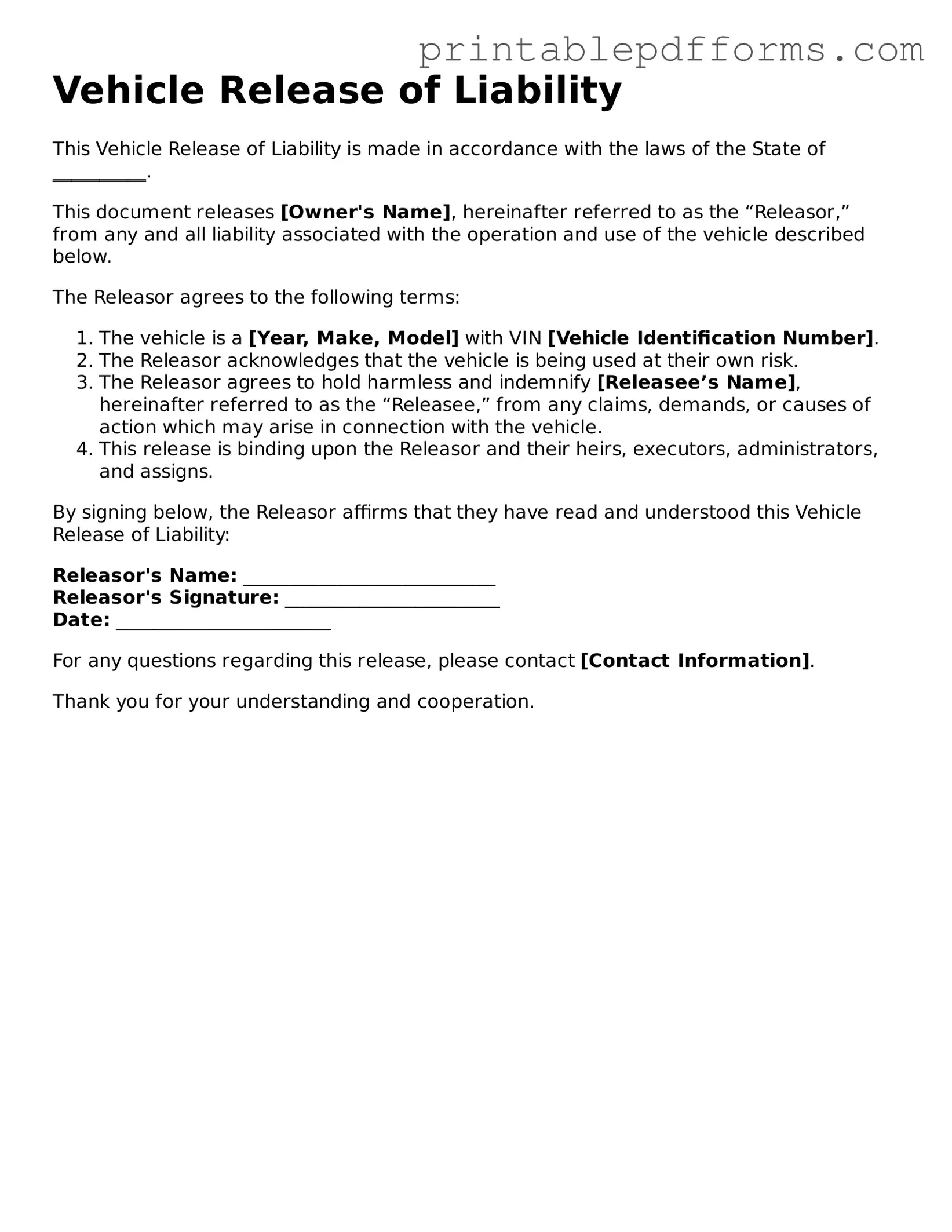A Vehicle Release of Liability form is a legal document that protects the vehicle owner from liability for any accidents or damages that occur after they transfer ownership of their vehicle. By signing this form, the new owner acknowledges that they accept responsibility for the vehicle once the transfer is complete.
Using this form is important for both the seller and the buyer. It helps clarify who is responsible for the vehicle after the sale. For the seller, it provides proof that they are no longer liable for any incidents involving the vehicle. For the buyer, it confirms that they have accepted the vehicle and its condition.
You should complete this form at the time of the vehicle sale or transfer. Doing it right away ensures that both parties have a clear understanding of their responsibilities. It’s also wise to file it with your local Department of Motor Vehicles (DMV) as soon as possible to officially document the change of ownership.
The form typically requires the following information:
-
The names and addresses of both the seller and the buyer
-
The vehicle's make, model, year, and Vehicle Identification Number (VIN)
-
The date of the sale
-
The sale price of the vehicle
Make sure all information is accurate to avoid any future disputes.
Yes, once both parties sign the form, it becomes a legally binding document. This means that both the seller and the buyer are expected to adhere to the terms outlined in the form. It can be used in court if any disputes arise regarding the vehicle after the sale.
In most cases, a witness or notary is not required for the Vehicle Release of Liability form to be valid. However, some states may have specific requirements, so it’s a good idea to check local regulations. Having a witness can add an extra layer of protection if any disputes arise later.
If you don’t use this form, you may remain liable for any accidents or damages that occur after the sale of your vehicle. This could lead to unexpected legal issues or financial responsibilities. It’s always best to protect yourself by documenting the transfer of ownership.
Yes, many websites offer templates for the Vehicle Release of Liability form. You can find them on legal websites or state DMV sites. Just ensure that the form you choose complies with your state’s laws and includes all necessary information.
After completing the form, both the seller and the buyer should keep a copy for their records. The seller should also file the form with the DMV to officially notify them of the change in ownership. This helps prevent any future liability issues and ensures the new owner is registered properly.
